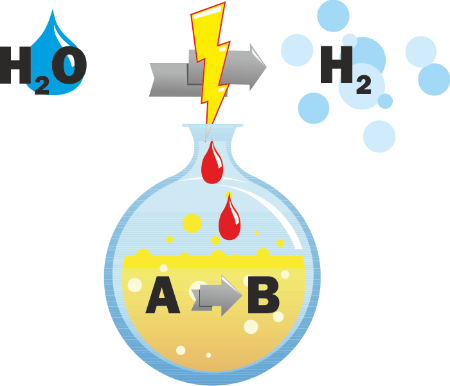TP4 – Narrow gap flow electrolysis cells and the challenge of hydrogen bubbles – a combined approach via modelling and experiment
For a later application of electrolytic conversions on a technical scale, the applied voltage for the electrolysis has to be low to ensure a high energy efficiency. One concept to tackle this is to employ a small distance between anode and cathode surface. Such narrow gaps have been found to allow the use of less conductive media. Usually, fewer ions also induce a smaller voltage drop. This is particularly important, because the downstream processing of the electrolytes is simplified due to a lower salt load. Within the planned project, modeling will be used to investigate the mechanisms of conductivity in thin films at low salt concentration or in the absence of salt. We will focus on the role of the electric field – which can be large in thin films even if the applied voltage is small - for the molecular structure of the medium, both in the bulk and close to the electrode surfaces. Furthermore, we will investigate the effect of electric fields on the dynamics and the viscosity of the medium, in order to elucidate how thin such cells can become before viscosity problems and mass transport adversely affect electrolysis.
A second challenge within the research network is the formation of molecular hydrogen when using flow electrolysis cells. This cathodic reaction is desired within this framework, but flow cells with undivided cell geometry, can be blocked by large gas bubbles due to their increased volume. Thus, the efficiency of such cells is greatly limited. Here, two approaches are being pursued in order to get this general problem under control. On the one hand, supporting surfactants are to be used which limit the size of the gas bubbles and produce at least a foam which is still conductive and continues to support electrolysis. Alternatively, divergent electrode arrangements will be tested as well. This part will also be supported by modeling studies. An alternative way will be to use very thin palladium foils on carrier structures to remove the hydrogen behind the cathode, without affecting narrow gap for the desired electrolysis.
Schmid, Friederike, Prof. Dr., born 23.04.1966, German; Schm985
Institute of Physics, Johannes Gutenberg University Mainz,
Staudingerweg 7-9, D-55128 Mainz, Germany
Tel.: +49 (0)6131 3920365; Email: friederike.schmid@uni-mainz.de
Waldvogel, Siegfried R., Prof. Dr., born 09.06.1969, German; Wa1276
Institute of Organic Chemistry, Johannes Gutenberg University Mainz,
Duesbergweg 10-14, D‑55128 Mainz, Germany
Tel.: +49 (0)6131-39 26069; Email: waldvogel@uni-mainz.de

 UNODE- DFG Forschergruppe 2982
UNODE- DFG Forschergruppe 2982